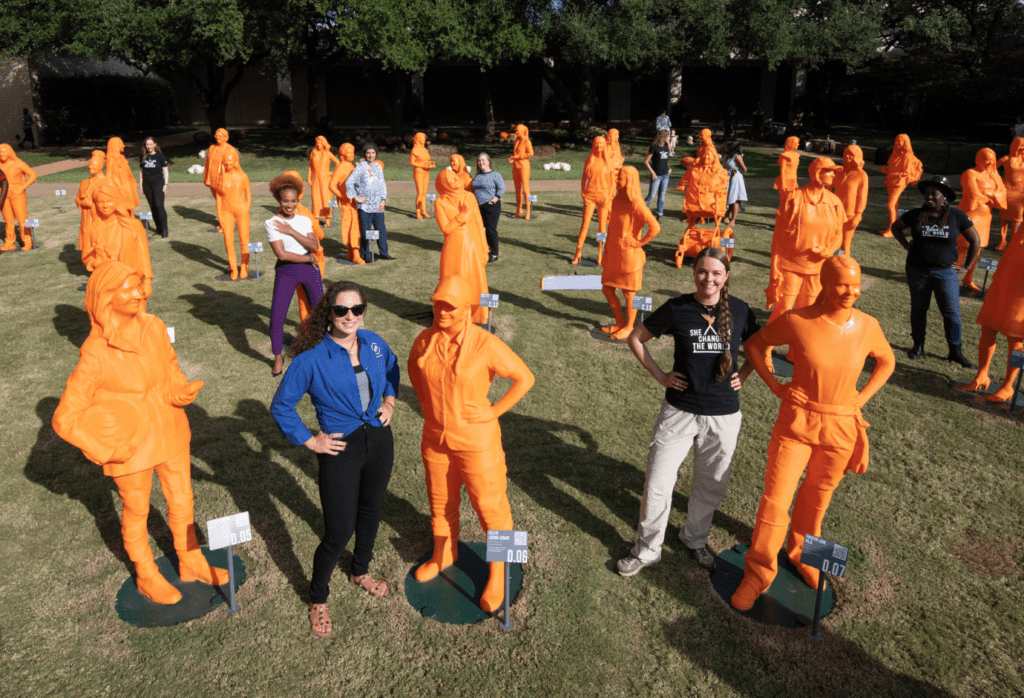On the front lawns of the world-famous Smithsonian Museum in Washington, D.C, 125 female scientists and innovators will be honoured with a life-sized statue of them to celebrate Women’s History Month in the U.S throughout March.
Organisers claim it will be the largest collection of statues of women ever assembled in U.S history.
The 3D-printed, bright, neon-orange statues is an exhibit collaboration between The Smithsonian Institution and Lyda Hill Philanthropies, a Dallas-based fund that specialises in investing in organisations with scientific focus, and named after Lyda Hill, an American investor and philanthropist.
The piece, titled “IfThenSheCan,” honours women working across a range of fields in STEM, including physics, medicine, biology and quantum computing. Each woman was selected by Lyda Hill Philanthropies and the American Association for the Advancement of Science for their leadership and dedication to inspire other young female scientists.
Women scientists and innovators who are featured in the exhibit include Jessica Nicole Esquivel, one of only 150 Black women in the U.S with a PhD in physics; Monica Rho, a physician for the U.S. Women’s National Soccer Team; Vanessa Hill, an innovative media entrepreneur who creates shows, documentaries and other content that explore psychology and neuroscience and Karina Popovich, a college student who engineered over 82,000 pieces of 3D-printed PPE for health-care workers in the early days of the pandemic.
Telescope System Specialist at the East Asian Observatory in Hawaii, Miriam Fuchs, said in her bio for the exhibit that she had always wanted to be an astrophysicist but had doubts.
“I felt like I was way too outgoing and creative to work in STEM,” she explained.
Fuchs, who was named Ambassador for the American Association for the Advancement of Science in 2019, reconnected with the subject in college, undertaking an astronomy course at Haverford College in Pennsylvania before receiving her bachelors in astrophysics in 2013.
“She helps scientists from around the world collect astronomical observations with a radio telescope so that they can learn about how stars form and what black holes look like,” the exhibit notes explained.
Ellen Stofan, the Smithsonian’s under secretary for science and research said in a statement the project is focused on “fostering an environment where all girls know they can make an indelible mark on our future.”
“The Exhibit provides the perfect opportunity for us to show that women have successfully thrived in STEM for decades, while also illustrating the innumerable role models young women can find in every field.”
Smithsonian official and director of the Arts and Industries Building, Rachel Goslins added: ““We are excited to highlight the work of these fame-changing STEM innovators and help expand the narrative about who is leading in these fields.”
“These women are changing the world and providing inspiration for the generation that will follow them.”
Each statue will have a QR code attached, allowing visitors to learn the background of each woman. A virtual tour of the exhibit can also be accessed on the exhibit’s official website.
Some of the statues have traveled to Dallas and New York, where they were placed inside Central Park Zoo to commemorate the 100th anniversary of the ratification of the 19th Amendment.
The entire exhibit, displaying the 120 women, will arrive in Washington D.C in March as part of “Women’s Futures Month,” — a month-long celebration of women in STEM.
Image: Courtesy of IF/THEN

